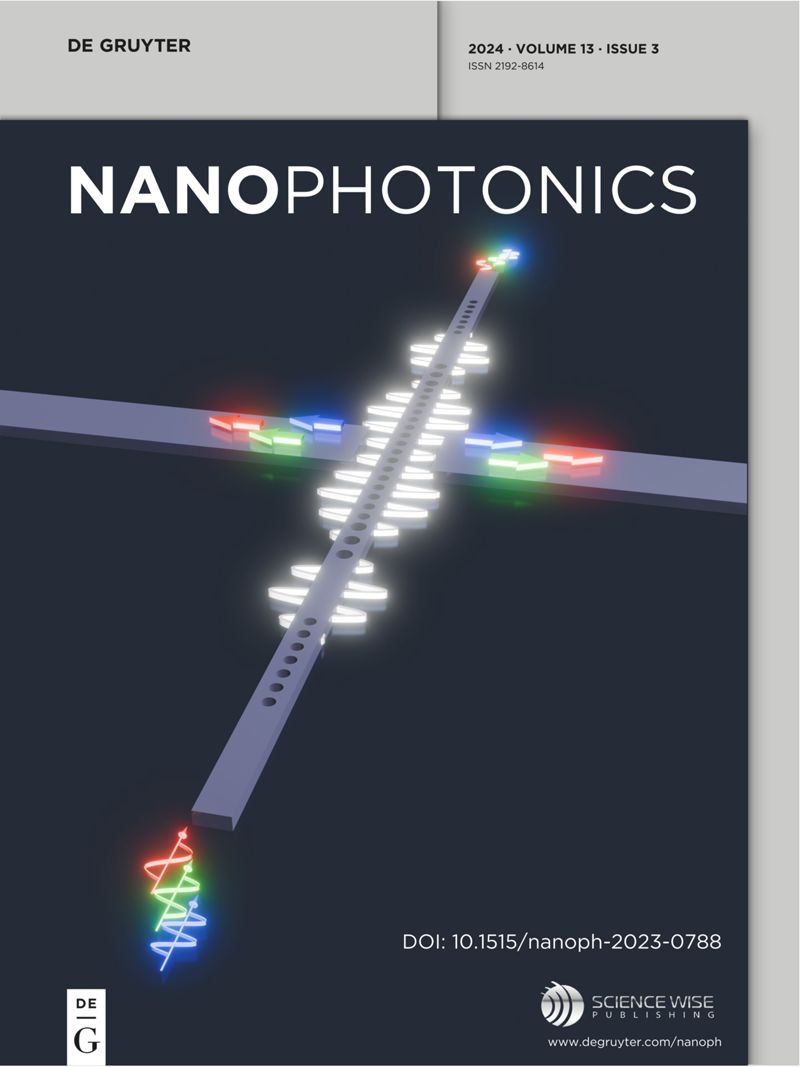Absorption and amplification singularities in metasurface etalons with gain
IF 6.5
2区 物理与天体物理
Q1 MATERIALS SCIENCE, MULTIDISCIPLINARY
引用次数: 0
Abstract
Passive reflective metasurfaces can possess perfect absorption conditions: Singular scattering anomalies at which all impinging light is absorbed. Perfect absorption is a common yet powerful metasurface design option with applications in energy harvesting, sensing, and more. Less common is the inclusion of optical gain to the system, which can give rise to a singular condition for perfect amplification. We analyze absorption and amplification singularities in plasmon antenna metasurface etalons with gain with a simple transfer matrix model. Our etalon follows the Salisbury screen design: A metal ground plate spaced by dielectric medium from an array of resonant plasmonic scatterers. We include frequency dispersive models for gain media and discuss the limitations of time reversal symmetry arguments for relating gain singularity conditions (reflectivity poles) to the well-known perfect absorption conditions (reflectivity zeros) of metasurface etalons. We show that for metasurface etalons with both gain and loss, gain can induce both perfect absorption and gain singularities, and we describe topological constraints on their creation and annihilation. Our findings have implications for the fields of non-Hermitian photonics, parity-time symmetric scattering systems, and dynamically controllable active metasurface pixels.具有增益的超表面标准子的吸收和放大奇异性
被动反射超表面可以具有完美的吸收条件:奇异散射异常,所有的入射光都被吸收。完美吸收是一种常见但功能强大的超表面设计选项,可用于能量收集,传感等。不太常见的是系统中包含光学增益,这可能会导致完美放大的单一条件。我们用一个简单的转移矩阵模型分析了带增益的等离子体天线超表面标准子的吸收和放大奇异性。我们的标准子遵循索尔兹伯里屏设计:一个金属接地面,由一组共振等离子体散射体的介电介质隔开。我们包括增益介质的频率色散模型,并讨论了将增益奇点条件(反射率极点)与众所周知的超表面标准子的完美吸收条件(反射率零)联系起来的时间反转对称性参数的局限性。我们证明了对于同时具有增益和损耗的超表面标准子,增益可以诱导完全吸收和增益奇点,并描述了它们产生和湮灭的拓扑约束。我们的发现对非厄米光子、奇偶时对称散射系统和动态可控有源超表面像元等领域具有重要意义。
本文章由计算机程序翻译,如有差异,请以英文原文为准。
求助全文
约1分钟内获得全文
求助全文
来源期刊

Nanophotonics
NANOSCIENCE & NANOTECHNOLOGY-MATERIALS SCIENCE, MULTIDISCIPLINARY
CiteScore
13.50
自引率
6.70%
发文量
358
审稿时长
7 weeks
期刊介绍:
Nanophotonics, published in collaboration with Sciencewise, is a prestigious journal that showcases recent international research results, notable advancements in the field, and innovative applications. It is regarded as one of the leading publications in the realm of nanophotonics and encompasses a range of article types including research articles, selectively invited reviews, letters, and perspectives.
The journal specifically delves into the study of photon interaction with nano-structures, such as carbon nano-tubes, nano metal particles, nano crystals, semiconductor nano dots, photonic crystals, tissue, and DNA. It offers comprehensive coverage of the most up-to-date discoveries, making it an essential resource for physicists, engineers, and material scientists.
 求助内容:
求助内容: 应助结果提醒方式:
应助结果提醒方式:


